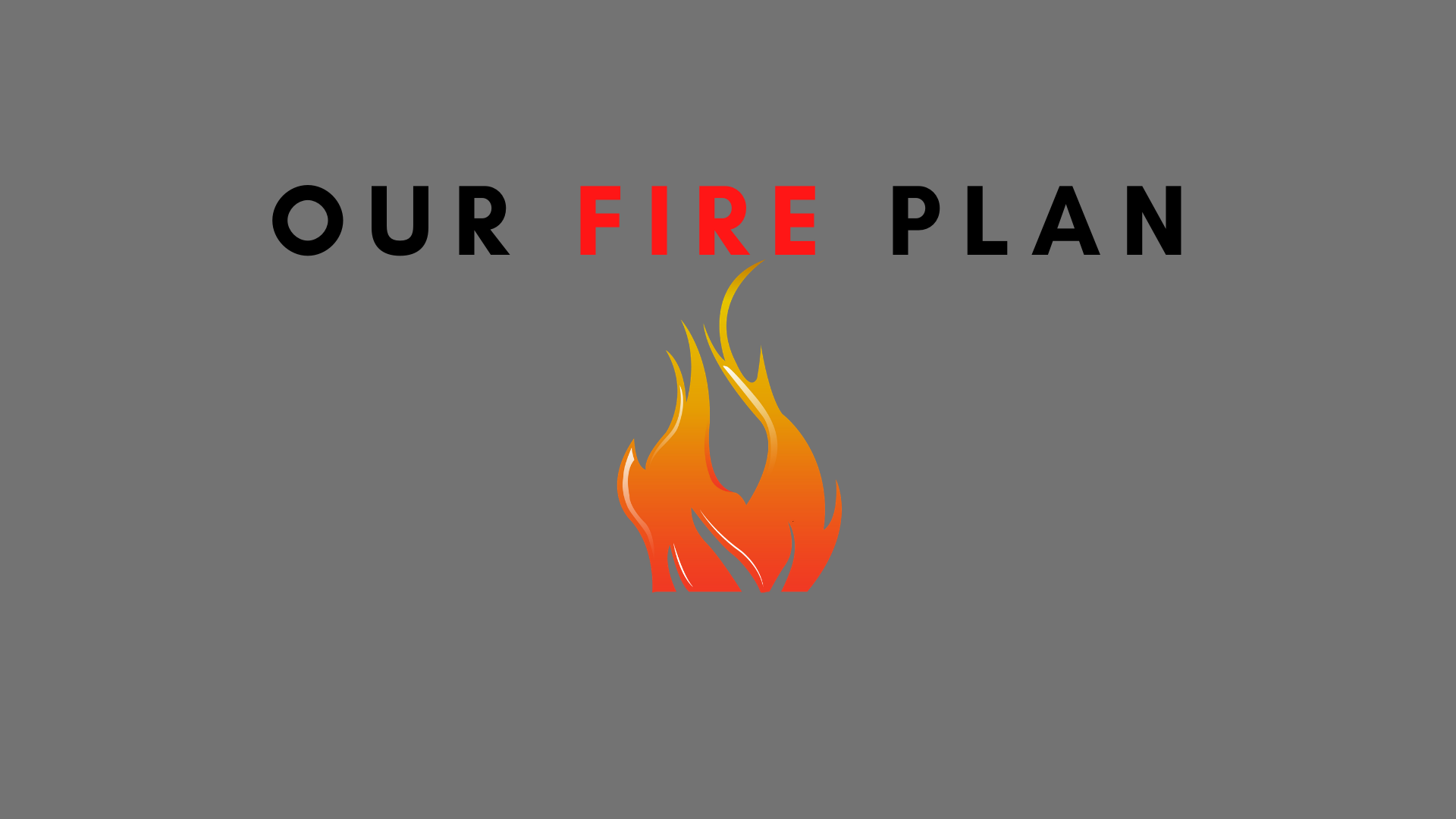Our FIRE plan

Disclosure: Post may contain affiliate links, meaning we earn a small commission if you make a purchase, at no cost to you. As an Amazon Affiliate, we earn from qualifying purchases.
What is FIRE?
FIRE is simply an acronym that stands for Financial Independence, Retire Early. It’s a broad movement that was ignited by concepts outlined in the 1992 book “Your Money or Your Life” written by Vicki Robin and Joe Dominguez. The ideas became popular with the millennial generation who had become discontent with the traditional models for work and retirement of their forebears. Online traction for the movement started surrounding the Mr. Money Mustache blog, launched in 2011, among other online blogs, podcasts, and other resources for the growing community. The big idea is that you save like crazy (early and often), reduce your living expenses, and then let compound interest pay your way instead of requiring a salary from a soul-sucking day job. That’s the gist.
Within the FIRE movement, there are subtleties and minutiae and you can go as far down the rabbit hole as you’d like (on this site and others). For every member of the FIRE community, the motivations and paths look different. To start off with though, it’s all based on some shockingly simple math.
Shockingly Simple Math
No matter which flavor of FIRE you’re going for, the math is shockingly simple to achieve your FIRE goals. It most famously comes from Mr. Money Mustache, but it gets its roots from the Trinity Study (a paper written in 1998). The Trinity Study states that if you have a pile of money, you can pull 4% of it out each year without touching the principle. The so called “live on the interest” approach. Although this seems magical to some, it is in fact true, sound, and (for onFIREfamily) life changing. The shockingly simple math says that you need to save 25 times your annual living expenses to be able to live off the interest and never run out of money retirement.
For us, our current annual living expenses for our family of four are $60,000.
25 x $60,000=$1,500,000 that’s our “FI number”
Fundamentally, a simple plan, then, would be to save a cool $1.5M, stop working forever, and retire early.
Choose Your Own Adventure
BUT, and here’s where it gets into a bit more of a choose your own adventure novel, there are other questions to be answered. Like: how do you expect your annual living expenses to change over time, and what does “retire early” really mean to you? For instance, do you think you can sit on a beach, year in and year out, for an extended retirement of 30, 40, or 50 years? Or do you think that, in exchange for pulling the trigger and quitting your soul-sucking day job, that you could work some part time job or seasonal work? Do you have the flexibility and discipline to cut back spending in lean market return years?
These are the tough questions that need answering and will guide your personal definition of FIRE, and hence, your plan. This website shows the onFIREfamily version and, as of today, it works for us. But one of the most amazing things about being on the path to financial independence is that it gives you so much freedom and so many options to pivot and change (even when you’re not all the way to your FI number). That’s why we have so many definitions that seemingly pop up almost weekly. (i.e. What is leanFIRE, fatFIRE, baristaFIRE, coastFIRE? What about a mini-retirement? etc.).
When you’re deeply in debt, living paycheck-to-paycheck, and the next payment is coming due, you have little room to adjust your plan. When you’re on the path, you are in charge, and you get to choose.
Our Family’s FIRE Plan
For us here at onFIREfamily, this is our current FIRE plan:
- Continue to save. We’re currently at 53% of our traditional FI number (depending on if you count the house or not).
- Take a mini-retirement year. Fully funded by saving and cash-flowing it (not withdrawing funds from retirement accounts).
- Get some fun jobs. These might include passion projects, part time work, seasonal employment (summers off), entrepreneurship, scaling existing side hustles, etc. Focus on being our own bosses, and not showing up to a cubicle 40 hours a week and being satisfied with just 2 weeks of vacation per year. Getting health insurance would be an awesome bonus.
- Coast to our FI number. Our accounts will continue to gain, on average, 8% per year as long as we’re not withdrawing living expenses from them. That means it will take us another approximately 8 years (if we don’t add anything to them and just let them grow) to formally reach FI and no longer require an income. During this time, our “fun” jobs will see us through.
There you go, that’s it for now. This is our FIRE plan as it sits today. Subject to change as our lives do but it’s good to have a plan, be on a plan, and know where we’re headed.


